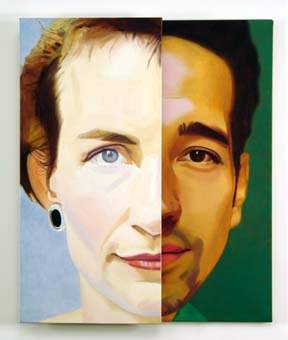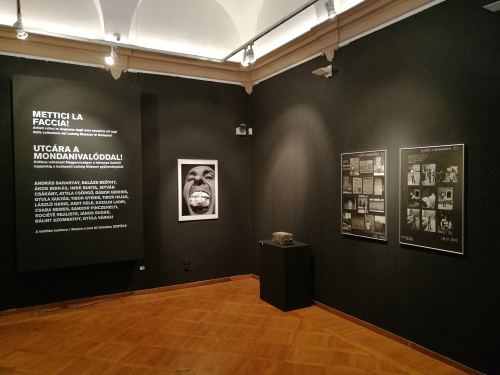Ákos Birkás produced his large paintings systematically from the mid-1980s to the end of the 1990s featuring a single motive: an oval shape filling the canvas almost completely, an abstract “head”, the countless variations of which – and the associations connected to the universal form – allowed for the interpretation of the painting as image space, as well as the condensed presentation of existential and philosophical questions. As a result of his critical relationship to painting and his own art, Birkás suddenly returned to figurative painting at the end of the 1990s, this time incorporating aspects of the “technical image” (photograph, press photography, cinema, etc.) into his art. Between 1999 and 2001 Birkás was working on his series of dual portraits: by way of juxtaposing two distinct panels, each depicting half of the faces of two people of different sex or personality, yielding a single portrait painted with vivid colors and light brush strokes. The abstract „I” is replaced by actual flesh and blood people – close and dear friends of the artist –, but the subject is still the interrelationship of the two half images: the contrast or possible unity of a woman or a man of light brown or dark hair, with blue or brown eyes, looking into the camera, at the painter, or at the viewer; the schism between the two halves (the two personalities) and the visual and emotional tension it produces. K.Sz.

